Loading...
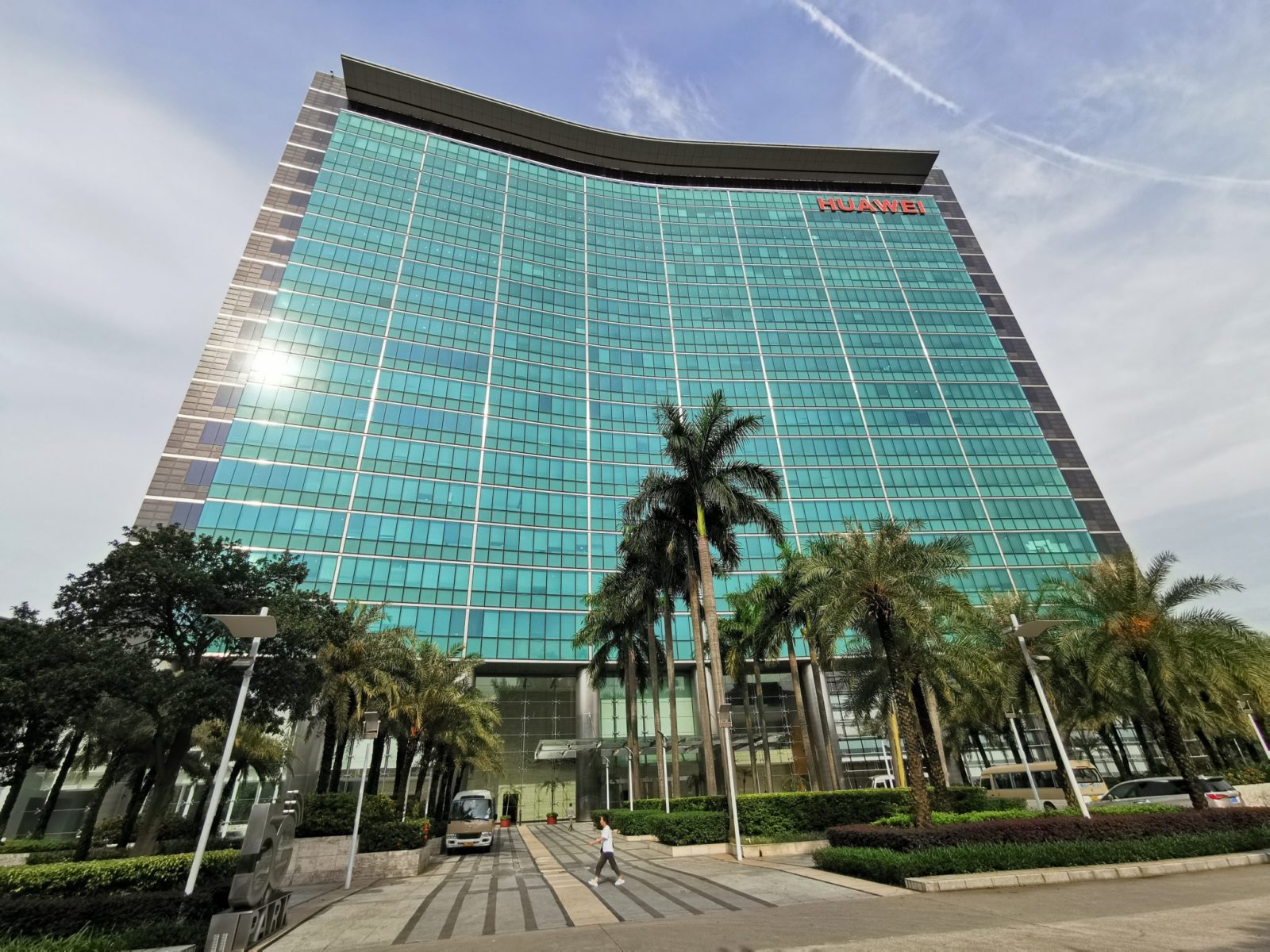
Recently, myself and Mike Agerbo (along with a number of other Canadian tech journalists) travelled to Shenzhen, China to see first hand Huawei’s headquarters and manufacturing facilities. We were invited before the current political quagmire with the United States had started. Initially, we thought the trip would be cancelled after the US added Huawei to their Entity List – essentially banning US companies from working and doing business with them. To our surprise, the trip was still on and we headed out on our 13.5 hour trip from Vancouver.
Upon arrival in China (via Hong Kong and driving across to Shenzhen in Mainland China) we headed to our hotel, the Amber Prime aka the ‘Huawei Hotel’. You can’t book it on your favorite booking site as it’s only for Huawei’s customers and guests. This was our first indication of the scale of Huawei in China. More on that in a bit.
Once settled and somewhat used to the 15 hour time difference from Vancouver, we met the next morning for breakfast and our first tour of the day. We started by visiting one of the main buildings on the campus and were given the background and history of Huawei, including it’s interesting Canadian connection.



We captured this overview for our Get Connected radio show and you can listen to it here (at around the three minute mark in the broadcast):
Our next stop was the Executive Briefing Centre. This is just one of the buildings that Huawei uses to showcase their products and services in a permanent trade show style display area.


One area that I was particularly interested in was the 5G zone where they displayed a number of different consumer and enterprise class products for use with 5G communications. The ‘5G Backpack’ was interesting because it basically replaces the need for those big tv trucks you see at events with the ability to broadcast 4K video live over 5G wireless from anywhere. They also had a larger drone outfitted with the same tech as the backpack for live event broadcasting.



The next stop was some of the various labs where Huawei’s partners integrate their technology. These labs had demonstrations of various streaming and wifi technologies being used for self-driving car automation and virtual & augmented reality experiences.
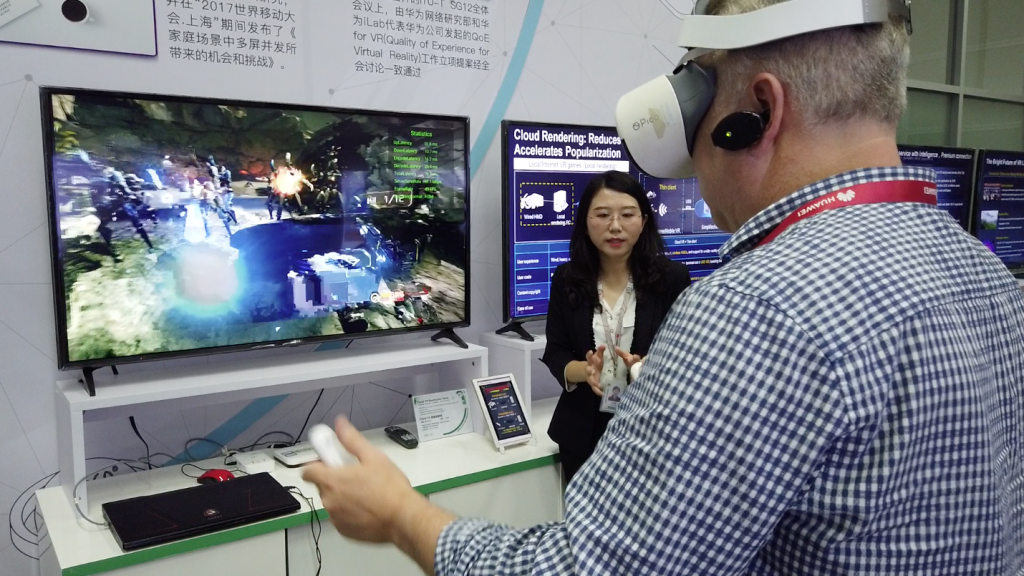
After a quick lunch in the employee canteen, we boarded a bus to Dongguan, about an hour away, to see the manufacturing department. This was easily one of the most anticipated stops on our tour for me as it’s where Huawei makes some of their smartphone products.
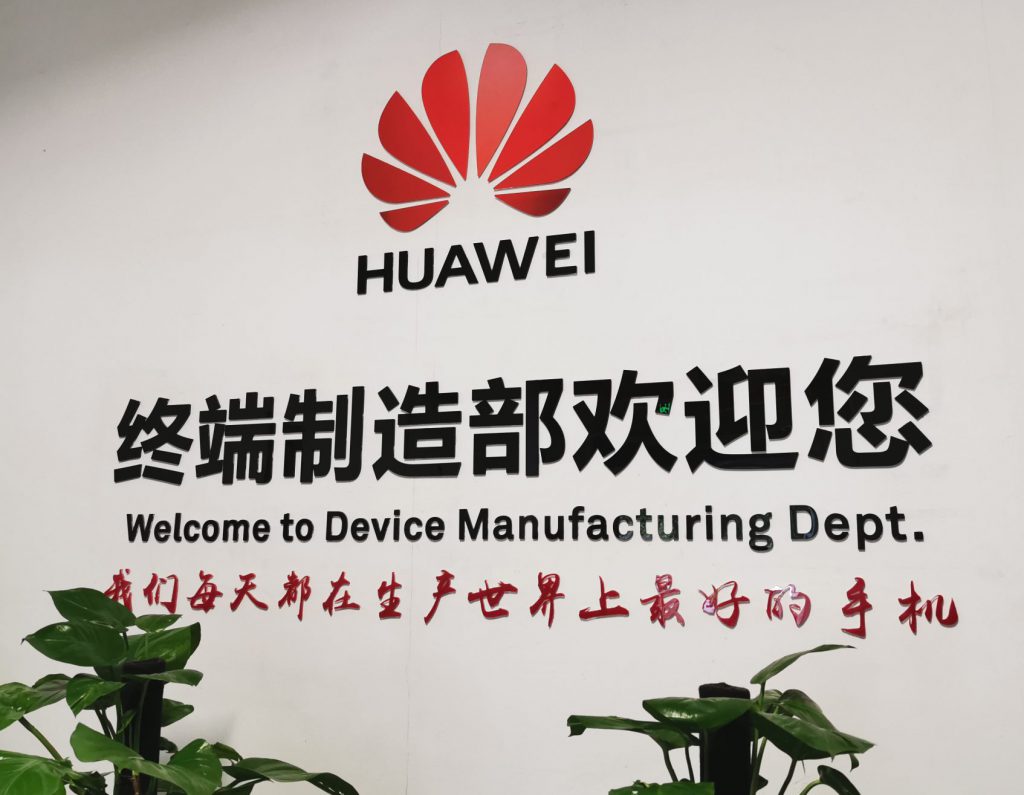
As you can imagine, this is a highly secured facility. While we were allowed to visit the facility, we weren’t able to shoot video anywhere in this particular building and we could only take photos at specific locations on the production floor. Fortunately, we were provided with video footage they shot to give you an idea of what we saw:
While I had fully expected to see robots in action, I wasn’t prepared to see how many different types of them were working on the line. Alongside the robots, there was also a number of employees working at various stations. Robotic trollies would bring parts and supplies to the various stations along the production line so that employees could load the various machines with the components which was making the P30 smartphone on the line we visited. I was particularly mesmerized by one robot whose job was to pick up a mostly assembled phone, rotate it around (from how it was proceeding up to this point along the assembly line on the conveyor belt system) and proceed to press the power button. Once the phone powered on (with the Google boot logo clearly visible), it would pick up the phone again and send it along down the line after verifying that the display was working properly.





As you can see in the video above, at numerous times, various parts are soldered or glued into place with an employee inspecting the finished work. We were told that each production line had seventeen employees in total. A completed phone comes off the line every thirty seconds.
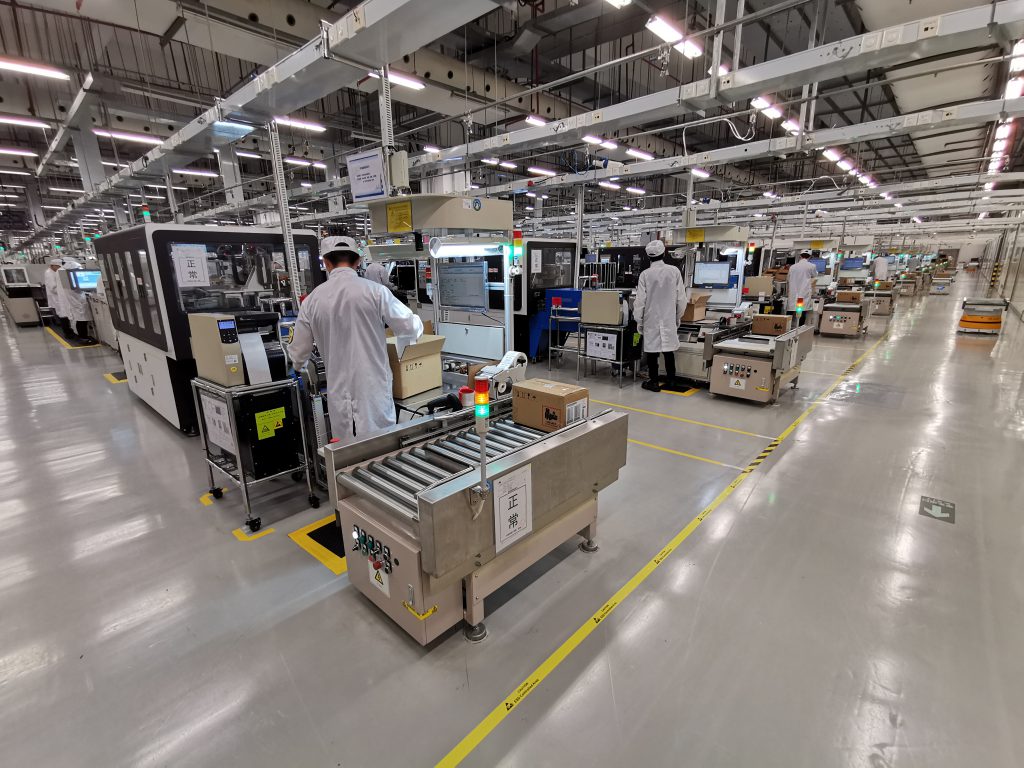
One of the last steps in the process is packaging which seems to have the most employees involved. We had expected this part of the process to be done by robots but it seems they aren’t (yet) able to catch some of the imperfections that a human can.
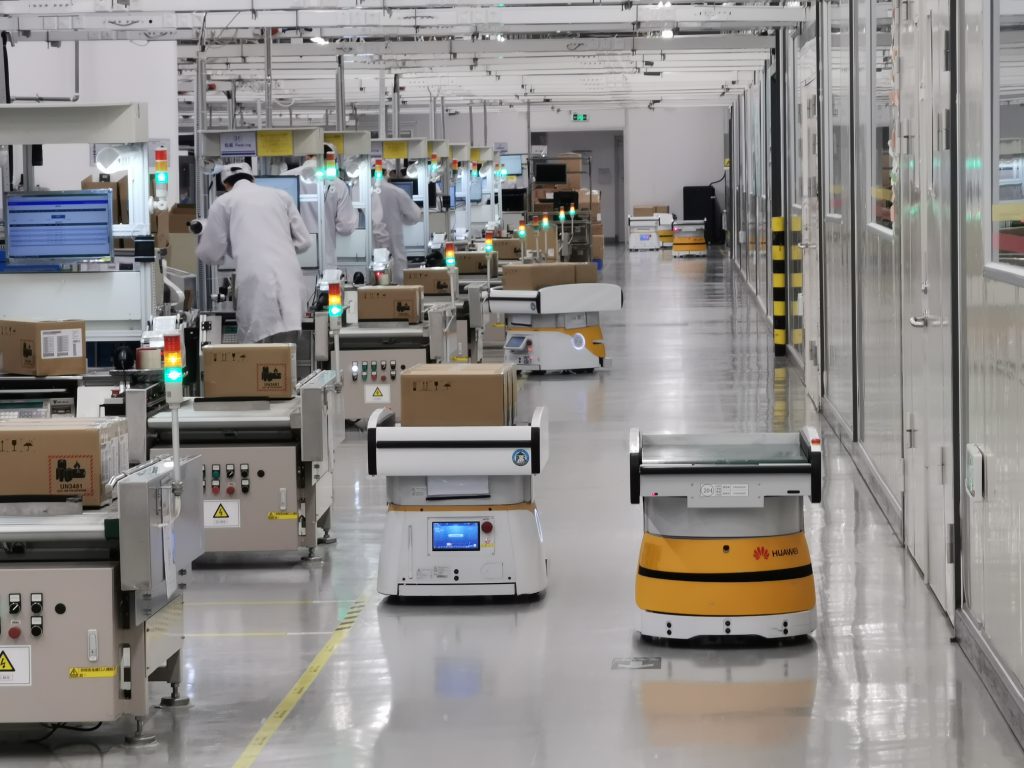
Once a worker boxes up a phone, it’s placed inside a larger box with other phones. As they box up these units, autonomous robots pull up to their station, ready to take away the packed phones. It was quite the ballet of synchronization watching as the boxes were packed by humans, only to have a robot take it away the moment they had completed three cases of phones.
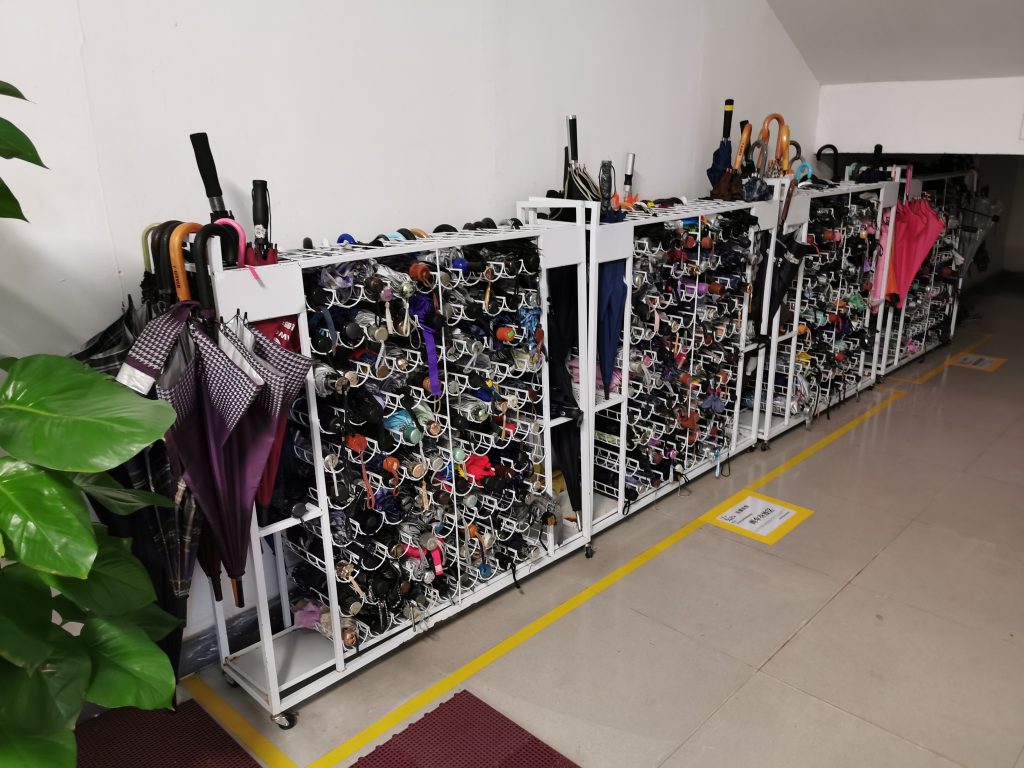
Next up was an antenna testing facility that was basically giant foam filled soundproof room:
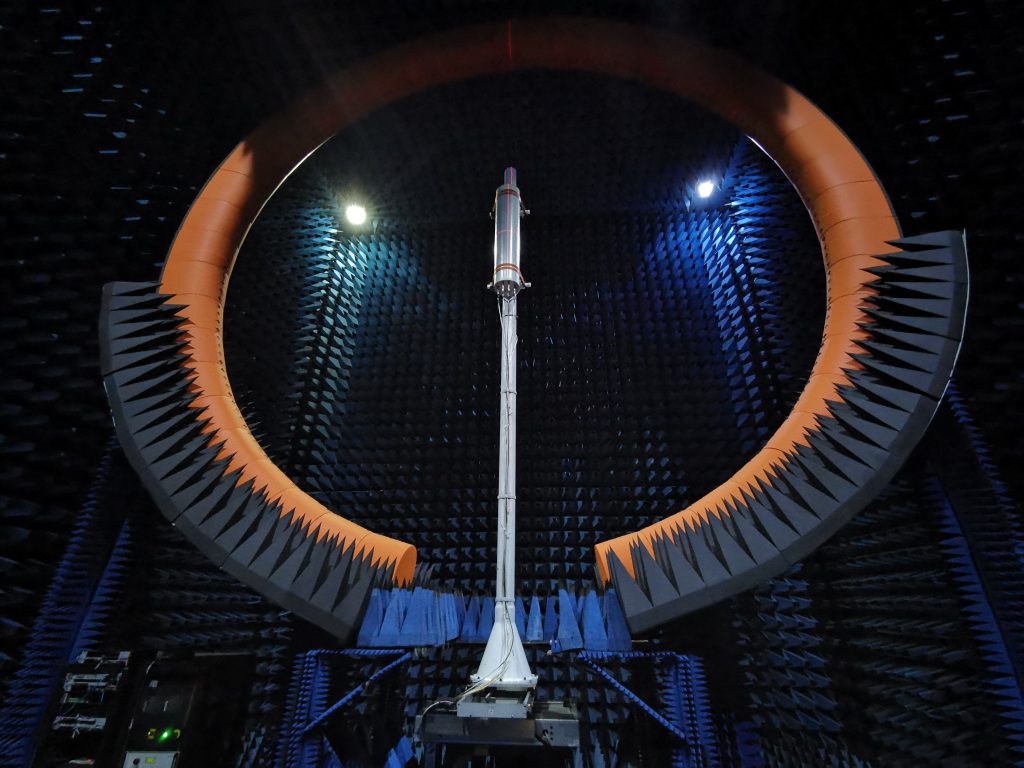
Our last stop on this campus was the Cyber Security Lab. They weren’t able to show us a lot here in the lab (due to various customer projects underway) but we did get a presentation and a q&a session with the heads of the lab where they explained the rigorous testing that all of Huawei’s hard and software goes through. This includes the various ISO certifications and technical committees that they contribute to.
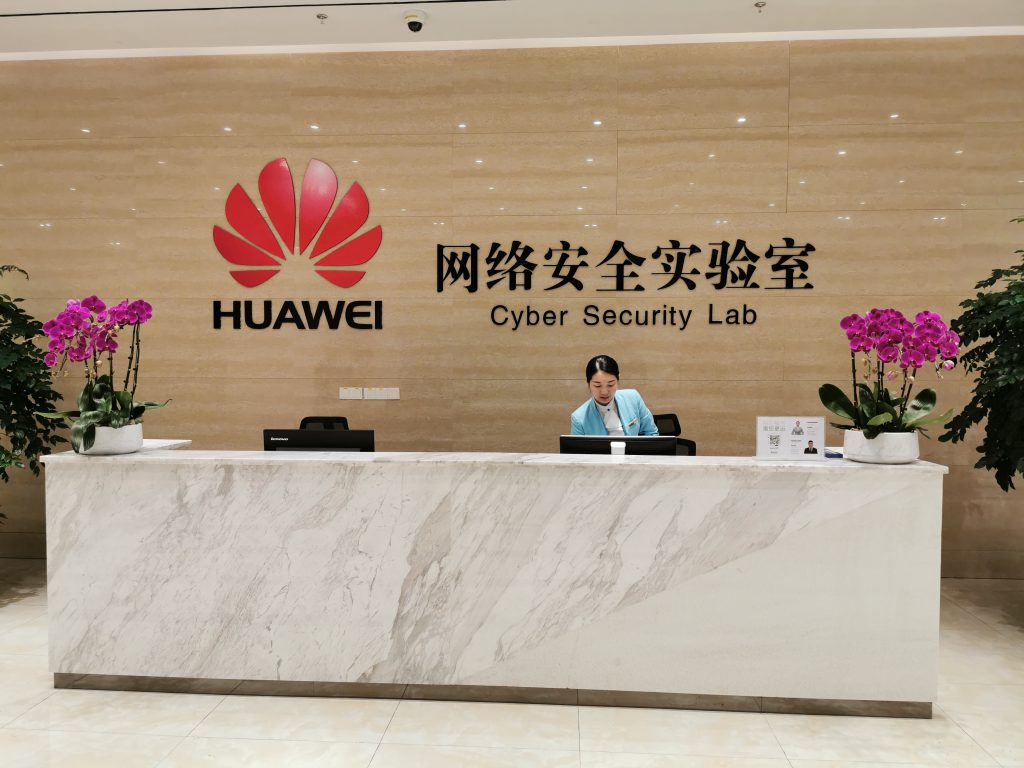
The take away for us here was that due to the certifications they are being scrutinized under (and attain), it would make it very difficult, if not impossible, to sneak in backdoors or any other nefarious ‘spying’ that they have often been accused of doing. Of course, while anything is possible, but after seeing things with our own eyes, being able to ask questions and in most cases, see everything, it sure feels like Huawei is simply a pawn in this political exercise with the United States.
Our next stop was Ox Horn, which is Huawei’s newest campus. It’s hard to express the sheer scale of Ox Horn but it felt like Disney World, minus the rollercoasters. It’s comprised of 12 zones that are modeled after various areas and cities in Europe. There is an electric train and multiple tram cars that take employees around the campus which we got to experience ourselves:
It truly was spectacular to witness in person when you think about the fact that Huawei is planning on having upwards of 40,000 employees at this campus alone, complete with housing. They also aren’t moving from another campus, this is net new in addition to their existing, sprawling set of campuses. It makes any other tech headquarters seem like a corner store in comparison. The founder of Huawei wanted to build a campus that would be the envy of other companies and be an inspiring place to work. He also loves European cities and built a replica of some of his favourites. It genuinely seemed like an amazing place to work.
An interesting tidbit we gleaned from meeting with and spending time with so many different employees during our time there is that a lot of them have iPhones and other non-Huawei technology. They are encouraged to experience competitors equipment because it helps make their products better.
While we had an interesting and fascinating visit to China and Huawei, I’m left wondering how long the politics will continue and ultimately harm Huawei and even the US as this trade war goes on. A company can only sustain so much negative attention, regardless of size, before it starts to have an impact.

To ‘GetConnected’ to our newsletter, fill out the details and hit the ‘SUBSCRIBE’ button. We do require you to confirm your email.